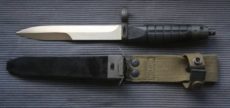Sweden
The military history of Sweden during the 19th and 20th centuries is a fascinating journey through wars, alliances, and strategic shifts. Let’s explore some key moments:
- Peninsular War (1807–1814):
- During the Napoleonic Wars, Sweden played a crucial role. French troops invaded Portugal in 1807, leading to the Peninsular War.
- Swedish forces fought alongside the British against the French and their allies.
- The famous Battle of Svolder in the 10th century resulted in the partition of Norway between Denmark and Sweden.
- Russo-Swedish Wars:
- The Russo-Swedish War (1495–97) saw Russian forces laying siege to the Swedish castle of Vyborg. The siege ended dramatically when a castellan set his powder supply on fire, scaring off the Muscovites.
- In subsequent years, Russia devastated Swedish Finland, leading to hostilities.
- The Thirty Years’ War (1618–1648) involved most major European powers, including Sweden. Although the Battle of Lützen was a Swedish victory, King Gustavus Adolphus was killed.
- Modernization and Universal Military Service:
- In the 19th century, Sweden developed a defense system based on universal military service. All eligible men between 20 and 25 underwent training.
- The coastal defense branch, Kustartilleriet (coastal artillery), played a significant role within the navy.
- World Wars and Neutrality:
- During World War I, Sweden maintained neutrality but faced economic challenges.
- In World War II, Sweden remained neutral but provided humanitarian aid and sheltered refugees.
-
Postwar Era and NATO Neutrality:
- After World War II, Sweden focused on modernizing its armed forces.
- It actively participated in UN peacekeeping missions.
- Despite proximity to the Cold War, Sweden maintained a policy of neutrality and non-alignment.
Swedish history of 19th and 20th centuries is much less violent then that of previous ages. Thel last relevant military struggles took place during Napoleonic period and resulted in loss of Finland to Russia. Then Sweden entered peaceful period of personal union with Norway and then neutrality, that characterized this country also in 20th century.
In this long years Swedish army was not neglected. Weaponery had been developed and upgraded as in other European countries. Kammerladder breach loading percussion rifle appeared in 1851 and could easy oppose Dreyse pin rifle, soon came Remington rolling block, Mauser system rifles a few years later then in Germany.
Bayonets also followed trends – socket, then yatagan blades, then knife bayonets and before WWI longer knife, as most trendy models of that time (Arisakas, SMLE, Berthier, Mauser butcher blade and many others).
Long edged weapons evolved in 19th century from cutting sabers to huge cavalry swords with straight blades for pointing. Sometimes they were of of experimantal modern design and shape, like “Gottlands huggare” or mane other design of “bolo-like” blade shape.
Most of this weapons had been released to civil market as military surplus. Usually they are not worn and heavily used. And most of them had been manufactured from high quality materials with perfect craftsmanship. All the above makes them really nice blades.
Here are some pieces from my collection with obvious lack of socket bayonets – I don’t care for them;)
There is no other reference site for Scandinavian bayonets than Per Holmback’s site – www.holmback.se
Showing 1–16 of 39 results














